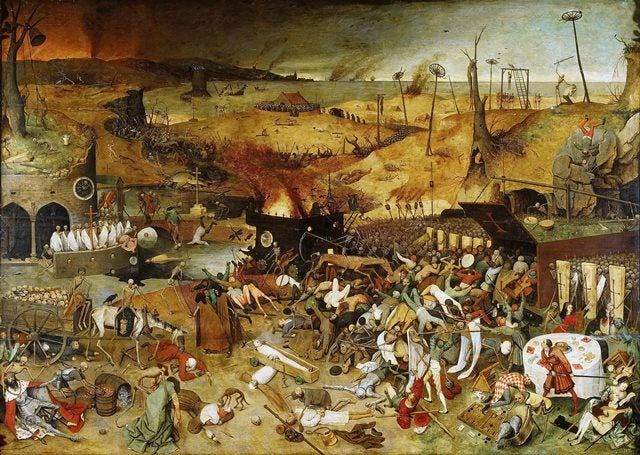Three Lessons from Outbreaks of Bubonic Plague in the Middle Ages
Kevin Felts 05.07.18

Our old adversary, Bubonic Plague (Yersinia pestis), reared its ugly head in 2017 during an outbreak in Madagascar. From time to time the Bubonic Plague will make an appearance reaping, death an misery in its wake. However, unlike in the Middle Ages, Yersinia pestis is treatable with antibiotics.
If nothing else, the outbreaks serve as a warning that diseases are still around and will never go away. As science progresses and cures are found, something new comes along. HIV has been with humanity for decades, and we still do not have a cure or vaccine.
Using examples set by Bubonic Plague, HIV, Swine Flu, Bird Flu, it is just a matter of time before humanity faces another epidemic. Modern air travel and cities packed with millions of people provide the perfect opportunity for a new viral pathogen to rapidly spread.
Looking at the examples set by our ancestors in the Middle Ages, what can we learn from outbreaks of Bubonic Plague?
Shipping Collapses
One of the first groups usually are people who ship and handle goods. In the Middle Ages these were ships which transported goods, and in numerous cases caravans. It is speculated Bubonic Plague was picked up by caravans bringing goods to shipping ports. From there, the ships brought the disease to various ports in the developed world.
In today’s world, this means air travel, truck drivers, and warehouse workers.
Once the people who move the goods become ill, shipping collapses. This means no more trucks moving from the warehouses to the cities, no more warehouse workers, no more stockers to stock the grocery store shelves.
Those Who Can Isolate Will
During outbreaks of Bubonic Plague in the Middle Ages, land owners would usually isolate themselves on their property. Communities may not allow travelers access. Farmers would stop bringing their products to market.
In other words, those who were able to isolate themselves from the outside world would.
This isolation usually (but not always) kept the people safe from outbreaks. There are stories dating to the Middle Ages of entire towns, except for a couple of people, decimated by the Bubonic Plague. The outbreaks did not just affect people as all types of animals died.
Cities Collapse
With no food, and the dead piling up, cities became a cesspool of disease and starvation. Eventually, those who were able to flee the cities did.
There are numerous accounts of people dying along the side of the road, and in the bushes, and in the fields while trying to flee the cities. People died of starvation and from various diseases, and not just the plague.
Along with starvation came a weakened immune system, which opened the window for various diseases. In their weakened state people fell to dysentery, the flu, and pneumonia, just to name a few.
People in desperation slaughtered dogs, cats, horses, everything they could get their hands on to eat. In some cases, each other.
Final Thoughts
While some of the readers may be quick to dismiss the chance of a new viral plague striking humanity, let’s not forget about HIV. If HIV had been airborne, chances are humanity would have been brought to its knees.
While the Black Death decimated Europe in the Middle Ages killing an estimated 1/3 of the population, the historical accounts provide us with a wealth of information. We can take information and use it to shape our survival plans.